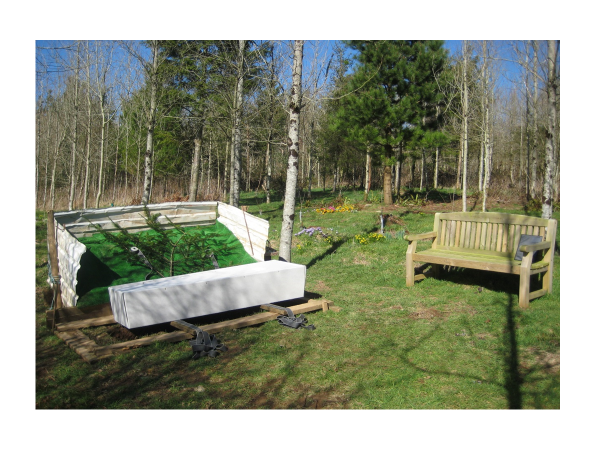Private Land Burials

We have, over the last few weeks, helped four families with burials on private land. This enables them to keep the funeral very close to home and personal, without the pressures of dealing with the crematorium or an official burial ground. Our role has been to give some advice, look after the person who has died for some of the time between the death and the funeral in our mortuary facilities, and be around to support each family to do this with confidence.
 Most people don’t know that private land burials are a possibility. But to bury two or three people on a piece of land, with no commercial transaction taking place, does not require any planning permission to be a cemetery. There are some guidelines with regard to the proximity of water, but no inspection or permission is needed on environmental grounds. Most people elect to have a professional grave digger to make the grave, but you can do that yourselves if you feel confident.
Most people don’t know that private land burials are a possibility. But to bury two or three people on a piece of land, with no commercial transaction taking place, does not require any planning permission to be a cemetery. There are some guidelines with regard to the proximity of water, but no inspection or permission is needed on environmental grounds. Most people elect to have a professional grave digger to make the grave, but you can do that yourselves if you feel confident.
These funerals tend to be homely and informal and families and friends can take ownership and more control of the proceedings. Being out in nature is inspiring and comforting and gives the opportunity for ‘moments of grace’; we’ve experienced an owl hooting as the coffin is lowered in the early afternoon, a fox walking by, a shaft of sunlight from a dark sky. Many people come away saying “I never knew a funeral could be like that”. Well it can, whatever you choose it to be, expressing love and spirit, a funeral with heart and soul.
Here is a summary of the main rules and guidelines for a private land burial.
1. You must have the permission of the landowner, but planning permission is not required from your local planning authority for two or three family burials unless there are specific restrictive covenants on the land. If there are to be more than two or three burials you have to apply for a change of use, to a cemetery.
2. There is no law requiring a coffin as long as the body is covered when in public. A wrapping or shroud can be used instead.
3. To avoid the risk of water pollution a burial site should not be within 10 metres of standing or running water or within 50 metres of a well, a borehole or a spring providing water for human consumption. It is also advisable to avoid within 1.5 metres of underground cables or pipes. This information should be on the deeds of the property.
4. The death must be registered in the normal way before the burial takes place and a burial authorisation obtained from the Registrar (the Green Form or Burial Certificate), or from the Coroner if there is an inquest (a white form called a Coroner’s Burial Order). The landowner or land manager must fill in the tear-off strip and return it to the Registrar of Births and Deaths within 96 hours of any burial.
5. It is necessary to comply with the 1864 Registration of Burials Act (ch97) and create a land burial register. This register should be durable and record, in columns, the entry number, date of burial, names in full, age, last address, date of birth, plan reference number and officiating minister (if applicable). The register should be kept in a steel cabinet, but may now also be maintained in a computer. There will be no official record of a private burial. It is sensible to store a detailed plan of where the body is buried on your property.
Farmland can be used for private burial. Set-aside land can be used ‘provided there was no return to the farmer in cash or kind … and the land remains croppable and in good agricultural condition’ (Min of Agriculture).
A large garden can be used for burial. Think carefully before creating a grave in a small urban garden. It could strain relations with neighbours and affect the value of the house.
To protect the land from future disturbance it is a good idea to choose a plot where you can make a separate access and set the area aside in trust so you can keep it if the rest of the property is sold. A new owner could obtain an exhumation licence and have the body re-buried in a cemetery.
For help and advice on arranging a funeral please click here >




